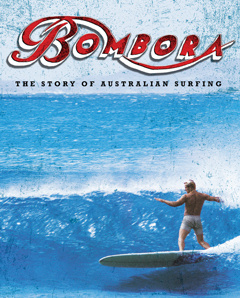A definitive history of surfing in Australia, Bombora tells the story of Australian beach culture through our surfing champions, writers, pioneers, entrepreneurs, mavericks, legends, drop-outs, and drop-ins.
The two-part series follows the rise of surfing and its culture in Australia, using archival footage and classic Australian music to illustrate its growing importance in Australian society in the 20th century and beyond.
From the time we learned to bodysurf to our first attempts on boards, to Duke Kahanamoku’s 1914 visit which kicked off surfing’s roll to popularity, Australians have taken the surf and made it our own, spawning international legends such as Midget Farrelly, Nat Young and seven-time world champion Layne Beachley, along with global surfwear brands.
Set against a changing world, Bombora follows the history of surfing from its maverick early days, through three significant wars and a depression, the development of surf clubs and the ensuing battles between lifesavers and surfers, the sea-change seeking drug culture of the 1970s and its shift to a cleaner, more professional sport in the late 1980s.
Bombora interviews a rich seam of Australian characters, including our first surf champion Isabel Letham, author and surfer Tim Winton, legendary surfboard shaper Bob McTavish, accidental entrepreneur, and Rip Curl founder Doug Warbrick and former world champion surfers Barton Lynch and Wayne ‘Rabbit’ Bartholomew.
It looks at the rise of women surfers and the explosion of Australian labels including Billabong, Rip Curl, and Quiksilver, which helped to cement Australia’s position as a global force in international surfing.
A Screen Australia/Bombora Film and Music production. Developed and produced in association with the Australian Broadcasting Corporation. A National Interest Program.
Episode 1, Thursday 26 March, 8:30 pm on ABC1
Global surfing culture is a mix of wildness, grace, and cool that is utterly Australian, but how did a nation of people, who mostly couldn't swim, turn a Polynesian pastime into a national obsession and international cultural force? Episode one looks at the early years of Australian surf history from 1830 to 1964.
Episode 2, Thursday 2 April, 8:30 pm on ABC1
In the early days of Australia's surf history, young people found a place to live out their dreams of innocence and freedom in the surf, but it wasn't to last. Episode two looks at the later years of Australian surf history from 1967 to the present.
Directors
Paul Clarke, Greg Appel
Writers
Paul Clarke, Greg Appel, Nick Carroll
Producers
Paul Clarke, Greg Appel
Executive Producer
Penny Robins
Narrator
Jack Thompson
Duration
2 x 55 minutes
Year
2009
Featuring interviews with
Tim Winton - Surfer/Author
Layne Beachley - World Surfing Champion
Nat Young - World Surfing Champion
Mark Occhilupo - World Surfing Champion
Paul Paterson - Big Wave Rider
John Witzig - Tracks Magazine Founder
Alan Green - Co-founder Quiksilver
Gordon Woods - Surfboard Designer
and more
With Music by
The Atlantics
Jet
Jesus & Mary Chain
Rose Tattoo
Status Quo
Hunters and Collectors
The Cruel Sea
The Velvet Underground
